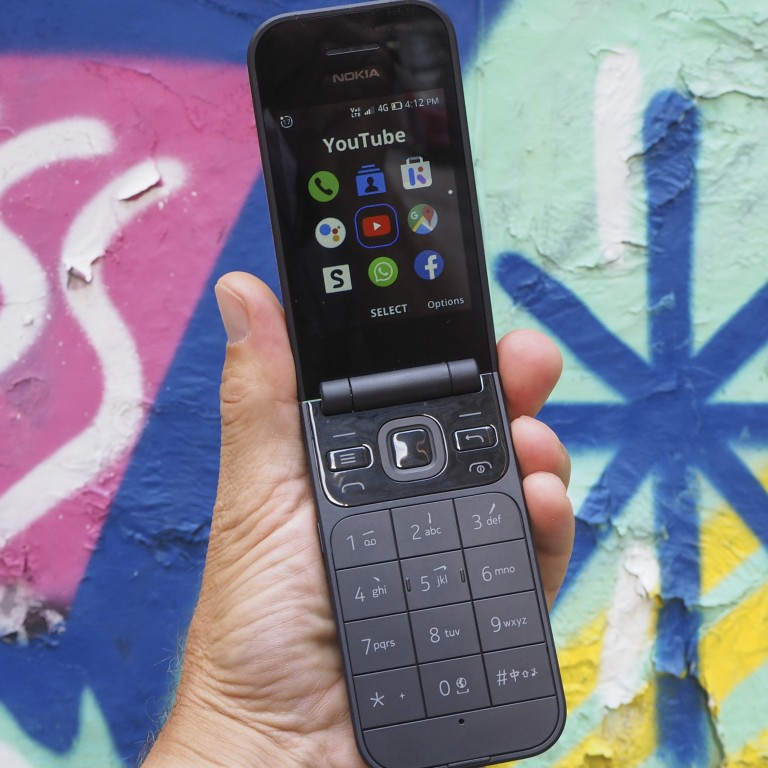
Review | New Nokia flip phone: review of Flip 2720 by a non-techie, spurred by Hong Kong protests
- Nokia’s Flip 2720 wouldn’t be a step up for most but for Fionnuala McHugh it was light years ahead of her previous phone
- It’s cheap, has a camera and 4G – so she can check which stations are being trashed by Hong Kong protesters. But there’s also one major flaw
Of course, I was already considered incredibly tardy on the telecommunication front, but I didn’t see the need for an expensive mobile. In 2014, prices for the new iPhone 6 started at a faint-inducing HK$5,000 (US$640). I had an iPad mini, which had all the functions of a smartphone except actual phoning. The trouble was I’d no internet access beyond my front door. I remember a glum moment at an MTR Wi-fi hotspot, when I was instructed to enter my mobile number to access the free, but secret, Wi-fi code.
A friend suggested I try the one-number-two-sim-cards method – one for a phone, one for an iPad – a classic Hong Kong solution that might, or might not, work. People told me that I needed a mobile plan.
But when I asked about their own plans – about cost, data, China roaming – no one knew exact specifics. Such plans were like Hong Kong’s Basic Law, much referred to yet barely read; the Consumer Council was receiving more and more complaints about telecom companies’ reinterpretation of initial agreements. (“This is why Li Ka-shing is Hong Kong’s wealthiest man,” someone told me at a dinner.)
iPhone 11 Pro Max: triple camera and all-day battery
I put HK$50 on it that autumn of 2014 and didn’t top it up again until June 4, 2015, on my way to Victoria Park for the Tiananmen vigil.

Mass gatherings in Hong Kong obviously prod my telecommunication need and this summer I had to reassess the situation.
Admiralty was once more at a standstill. In 2014, clutching my dinky new phone and strolling among teenagers sweetly doing their homework, their recycling, their art, I’d actually seen the word “Shangri-La” written in the sky, like a neon affirmation of an ideal world (although that hotel, towering above the area and suffering a business downturn like everyone else, wouldn’t have agreed).
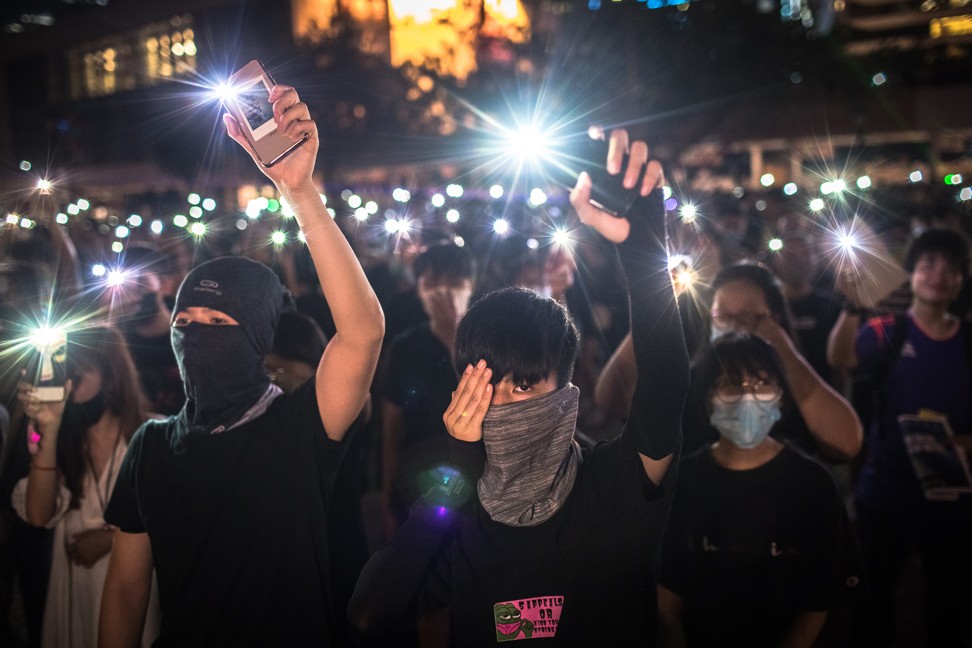
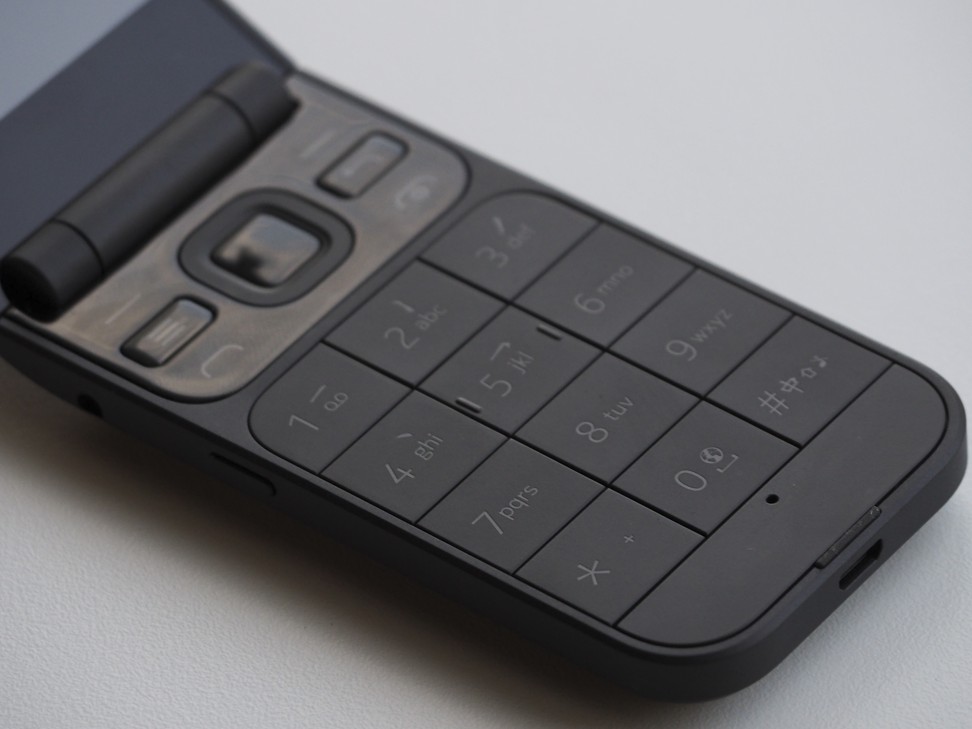
I’d no idea which one but, as the summer wore on, I honed my demands. It had to be cheap, with a camera. I had to be able to check what the latest news was, which MTR hotspot was being trashed and what alternative transport was available. It had to be the same as what I already had, just better. Could such an ideal exist?
Then, earlier this month in Berlin – strangely, in the very week that Hong Kong pro-democracy activist Joshua Wong, a protester from the 2014 generation, was visiting that city – Nokia relaunched its 2720 phone. It’s called the 2720 Flip. To quote from the press release it’s “a classic flip reimagined for today’s connected user”.
In other words, it’s the British colonial flag of Finnish telecommunications: totally pointless yet with a weird residual potency. (“So honest,” someone said to me, inexplicably, this summer about glimpsing the Union flag at protests.) They’re both rooted in the city’s collective memory. When I switch my Nokia on – do-do-do-do-dooo – people raise their heads in the MTR like old warhorses responding to some distant bugle. Sometimes I do it deliberately, just to exchange complicit grins with fellow travellers.
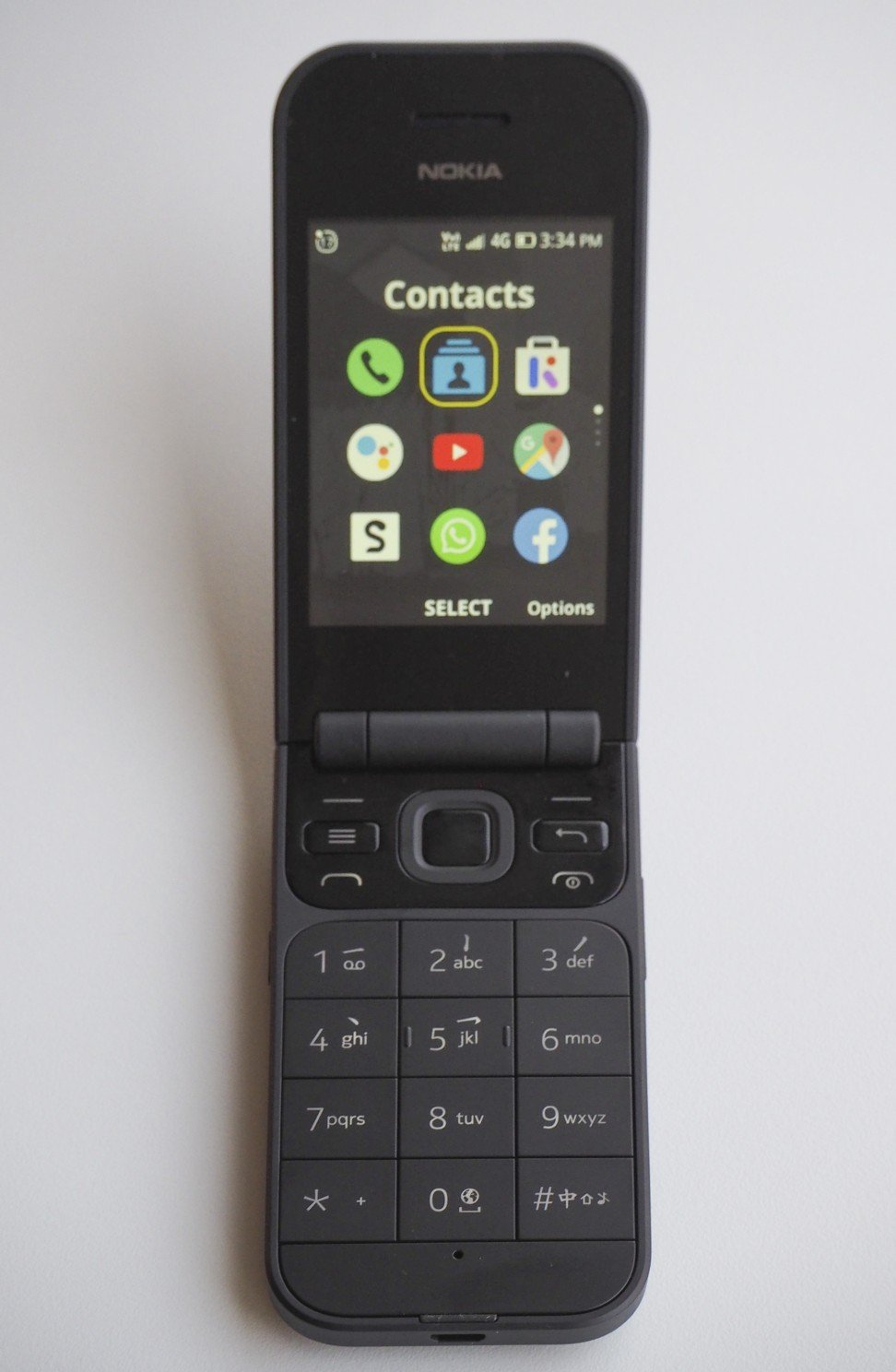
Here’s how honest, how caring, the new 2720 is: it has an alert button set into its side with which you can summon help from a list of loved ones or, should you enter the correct hotline numbers in advance, lawyers and consulates. (This function is called ICE – In Case of Emergency – which could cause confusion with Immigration and Customs Enforcement if the phone were available in the US, which it isn’t.)
Such assistance seems tailor-made for the current Hong Kong market, although I suspect the unfortunately-named Flip is aimed at the demographic that falls over at home rather than the one that’s tear-gassed. I saw it described on YouTube as “a phone for the elderly”, which isn’t encouraging; but it does have nice big buttons and a front-cover display that glows, helpfully, with the time and the notifications you’ve received.
I watched that YouTube review out on the street one night, in between clips of Friends (more retro consolation). The 2720 has 4G and, as I had a review model, I didn’t have to worry about choosing a plan. Throughout this summer, I’d been viewing live videos over people’s shoulders at protests; being able to do it in my own hand seemed incredible.
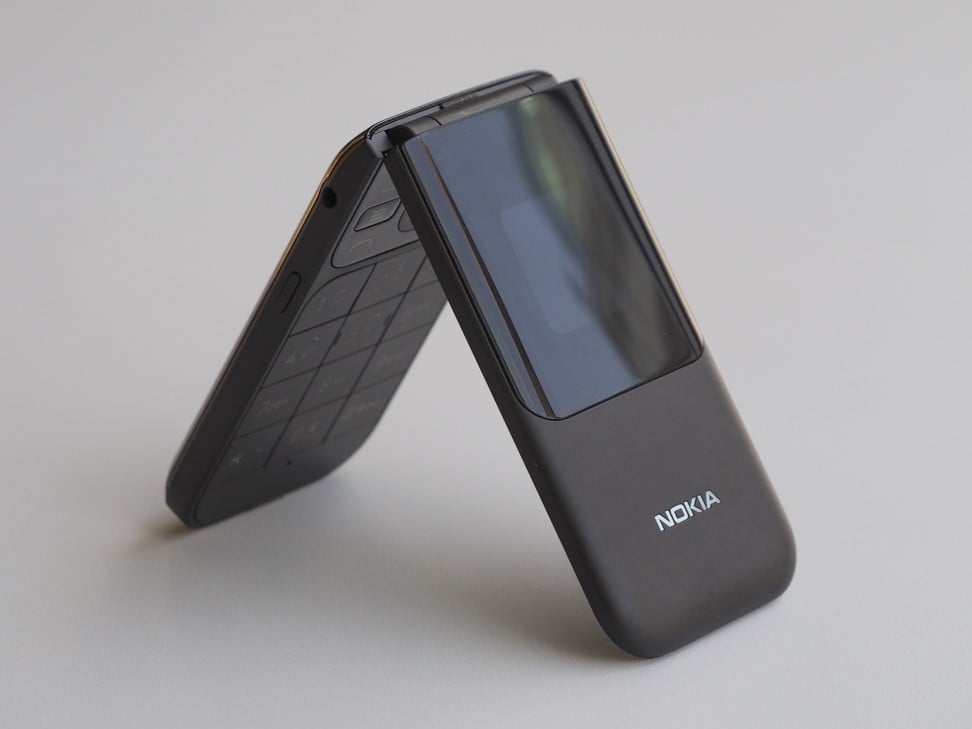
There’s almost no one left in Hong Kong who’d still find a Nokia flip phone a wondrous step up. But I did and I’m sure if I were on Facebook or WhatsApp, with which the new 2720 is pre-loaded, I’d be even more impressed.
Apparently, it has a stand-by battery life of 27 days. I only had it for 10 but I grew to love Google Assistant after it started to recognise my voice. (“Chunri Khan” for Kennedy Town was a rocky start.)
Most of all, I was transfixed by the price. It’s HK$798. There’s only one major flaw: alas, it’s the camera.
Initially, I took about 10 photos of my finger because it turns out that where you hold a flip phone is exactly where Nokia has placed the lens. I adjusted my grasp but even so, every fingerless photo was pretty bad. No protester would have objected to any of them except, possibly, on aesthetic grounds.

Is that a deal-breaker? I’m thinking about it. It was the most important of my demands. But was I being realistic in my initial expectations? Perhaps I need to weigh up the advantages of what the Flip offers against the unaffordable price of what I’d really like and do that most unfashionable act of all: compromise.
Dimension: 54.5 x 104.8 x 18.7mm (closed), 54.5 x 192.7 x 11.6mm (open)
Weight: 118 grams
Display: 2.8-inch QVGA main display
Battery: 1,500 mAh (removable)
OS: KaiOS
Processor: Qualcomm 205 Mobile Platform
Camera: 2MP (rear camera)
Memory: 512MB RAM
Colours: Black
Price: HK$798
